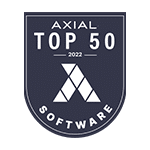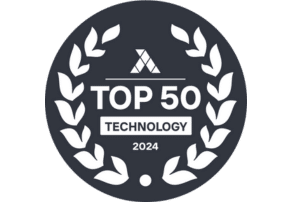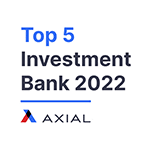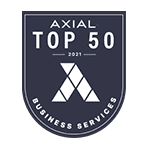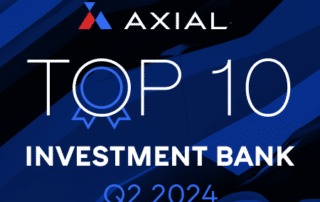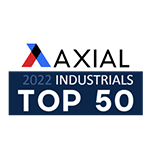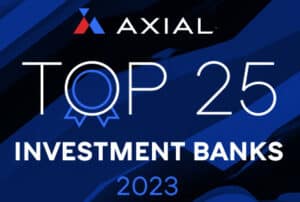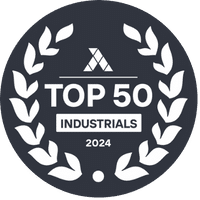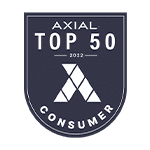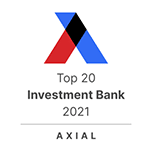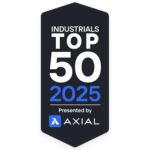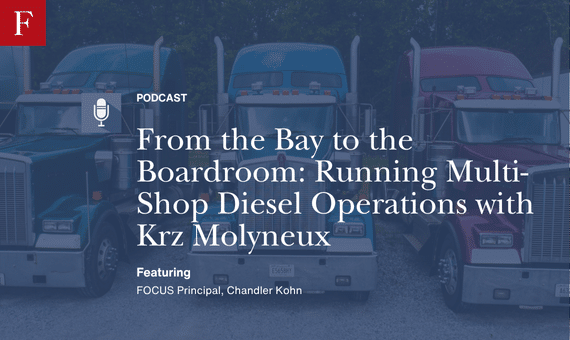
From the Bay to the Boardroom: Running Multi-Shop Diesel Operations with Krz Molyneux
In this episode of Know to Grow, host Chandler Kohn chats with second-generation diesel mechanic Krz Molyneux of KTS Diesel to talk about the realities of scaling a heavy-duty repair business. From managing two shops 25 miles apart to balancing leadership, staffing, and cash flow, Krz shares what it really takes to grow — and when expansion isn’t worth the stress. The two dive into lessons from an acquisition that didn’t go as planned, the importance of running lean, and why communication and hands-on leadership still drive success in today’s shop environment.
Krz Molyneux: I’m second generation diesel mechanic. So I grew up around my dad wrenching and my partner Tony, he’s the same, he’s a third generation diesel mechanic. So it’s in our blood. We grew up around it. I started working with my dad and he had his own diesel mobile diesel repair business growing up and I was a little grease monkey. I climb around and just basically saw the stuff he was servicing. Help him clean engine parts, you know, like just a little stuff. So I’ve been, I’ve been doing it since I was about eight.
Chandler Kohn: Okay, excellent, Good. Let’s chop into drop into multi location strategy here first we’ll talk about kind of owning multiple locations, managing them and starting multiple locations. We can kind of leave it open ended. So I’ll let you take it off.
Krz Molyneux: Yeah. So everyone kind of really wants like multiple locations until it comes down to really realizing what it takes to run them because it really comes down to leadership because you can have like the best employees in the world like running the location but they’re going to skip things here and there without like the checks and balances in place. You really need to have everything in line. And we’ve been rocking two locations for shoot I think 15 years now. And we had a third location for a couple of years here but we actually ended up shutting that one down because it was just too much to maintain. So yeah, I mean if you think about like how a shop runs, you know, if you’re in the mobile diesel repair facility and, and you have like multiple service trucks, you know what it takes to like get another truck on the road. Well like scale that times like 10 because you need all the things at the other location, you know, it’s like, it’s, there’s a lot of overhead that goes into it. You know, just AC machine alone. Those things cost a grip. You know, you got to have the space, you got to have electricity, the staff. So is like here in Phoenix we’re lucky because we have, we’re different sides of the, the city here. We got one in Chandler, one in Phoenix, and we had one in Avondale. But you know, it’s like a lot of people, they like the convenience of having to shop close. But also we’re mobile so we’re, we take the shop to them. The shops just for like heavy line repairs usually. Yeah. But yeah, there’s a lot of every. Everyone’s just like have another location and you’ll delve your profits. And reality is like it just have another location and be more stressed out and your margins go to basically until you get it rocking and rolling. You know what I mean? Yeah.
Chandler Kohn: And there’s, and it’s, it’s challenging. I mean, you know, tell the listeners how and we’ll kind of jump into some of the reasons. But how far apart are the locations in Chandler and Phoenix?
Krz Molyneux: Roughly about 20 miles apart, 25 miles apart, somewhere in there. And then we have like, we have a broader network that way because we do like a 30 mile radius from each shop. So we have this like giant radius that we can service with having two locations like that because we’re centralized, we don’t do all of Arizona. So yeah, it’s really nice because like, hey, Chandler, guys, like you got, you guys got the east side stuff, we got the west side stuff and we kind of play by ear when we’re on call and things like that.
Chandler Kohn: So yeah, so you’re saying 30 miles for the mobile or just your inbound customers coming into the shop?
Krz Molyneux: No mobile. So yeah, we have a 30 mile radius per shop. It’s kind of how we go out. Anything past that, we just, we towed the damn thing.
Chandler Kohn: And how many days do you have at each shop?
Krz Molyneux: We got six in Phoenix and we got three in Chandler. Yeah.
Chandler Kohn: So, you know, I think when we talk about, you know, multi shop location strategy, you know, obviously that can, you know, one and a half times or double your revenue or two and a half times that. You know, depending on several things, then you have the opportunity to spread overhead across multi locations. So you know, maybe you have the same accountant, right. Managing a different client base. You don’t need two accountants per location. You know, you have a technology system like full bay and the cost per shop decreases when you add another shop, right? Drops by 50%. So there’s some things you can do with, with overhead that can make the economics and essentially your ebitda, which is your earnings before interest, taxes, depreciation and amortization, which is really a metric for cash flow, go up. In practice, obviously, you know, you can’t be at two locations at once. So you have to have, you know, good leadership, a good gm, basically middle management between you and the folks doing the repairs in place. What are some of the challenges that you’ve had there? And actually getting gross profitability up per location name.
Krz Molyneux: The game is run lean man. I mean, you know, if you get a good, good employee that can wear multiple hats, you grab onto them and you run with them, you, you grow it with them. And you know, those are the people that keep it alive because you know, like you’re saying it’s exactly that, like hr phones, like any type of scheduling, anything that you can do remote, you just do from one location. Boots on the ground, you know, that’s where you gotta have, you gotta staff up. But yeah, it’s, it’s challenging for sure, but you gotta have your checks and balances, you know, like you gotta have your audits, your shop audits, your truck audits, your customer audits. You got, you gotta do the good follow ups behind all this stuff that happens.
Chandler Kohn: KPIs too, right? Revenue per employee, you know, just some things you need to have a good pulse on. You know, I see I talk with a lot of folks like yourself. You know, I’ve got folks in their, in their 60s that are still hands on. I’ve got folks that, you know, could basically run the business, business from home. Right. There’s a little bit additional cost associated with that. You’re taking this podcast from your home today, but can you run the business from your home? Do you, do you need to be in person? Tell us a little bit about how that impacts your economics.
Krz Molyneux: I’m just a control freak like most business owners, you know, so like I like, I like shaking hands and getting in it with the guys. Getting my hands dirty. Like, I like that because you know, there’s, I’ve been in business 16 years, man, and like there’s years where you’re totally hands off and like revenue’s good, but you’re just not sleeping well. You know, it’s like you got to get back into the grind a little bit here and there to, to also see like what needs to be improved. That’s not Getting on the, the checklist or the to do list, you know, for this first shop, for the trucks, that, that’s. And I’m young enough to get back in it at the minute, you know, so that’s what I like to do is just lead from the top and make sure these guys know that like, you know, whatever they’re gonna do daily is like, I’ve already done. So. Yeah, it’s, it’s a fun camaraderie in the culture is, is awesome. Our turn is really low on, on customer relations, like everything, man. It’s, it’s a good business to, to be in and like I said, it’s in my blood anyway, so I don’t know what else I’d be doing, man. Yeah.
Chandler Kohn: Remind the listeners how many employees you have.
Krz Molyneux: We got about 10 employees right now. We were up to like 15, but honestly we like every five years or so, I like to make sure we’re hitting all our, our net and sometimes that comes with, you know, we, we’re looking for a players and staffing up with a players, it’s, it’s tough because it takes a little bit to, to get them up to where they need to be and then when they’re there, we’re golden. But you know, when we get the, the economic downturns, you know, we gotta lean out sometimes. And you know, that, that’s the name of the game too. It’s, you know, don’t be afraid to get your hands dirty again because, you know, you can’t be up on this high horse like, hey, I’m making all this money a year. I got all this stuff in place. I don’t, I’m good. You know, I mean, but reality is like, you got, you still gotta lead and to do that you got to, you got to get in it with them.
Chandler Kohn: Yeah. And I think, you know, that, you know, getting your hands dirty sometimes is good. You kind of, you know, build some of that camaraderie with your employees, show them that you’re invested and reachable and kind of obtainable. You know, you really kind of understand, you know, where they’re lacking on the floor, where their skill sets are good, but you also don’t want to get, you know, too involved. And I think balancing that control can be very challenging. And that’s typically seen in even startups outside of heavy duty. It could be anything, or it could be a founder owner who is heavily involved in sales to make their business take off and cover some of their cash flow needs. But entrusting in some of their employees to help grow that. How do you find. And nobody’s perfect at it, but how do you try to find that balancing act from really being the CEO versus kind of getting some of your hands dirty?
Krz Molyneux: It’s a good question. I think that’s the, the question, man. You know, it all shifts like, you know, like 16 years that we’ve seen a lot of cycles throughout the years of like how things rock. But honestly, you just got to trust your people. And communication, man, that’s like one of our, our core values is communication. And you know, if someone sends a message, we’re all over like copy, 10, 4. I’m on it. You know, there’s nothing like left out in the open. That’s how we communicate with customers as well. So like we just, the communication is always there. Without that, man, things do fall apart. There’s so many questions. Open ended questions like did you receive it? Are they on that? You know, so like we work through all that stuff and if you got a problem, you got, you got to say something. You know, we can’t fix something that we don’t know is broken.
Chandler Kohn: Yeah, I gotcha. And then you mentioned the concept of, of double overhead. I want to talk about that because really, you know, the, the goal is to not double the overhead. It’s to get a, to spread the overhead cost out across two or three locations versus one. What, what have been the challenges that you’ve seen with overhead by going to another location? Obviously you have labor, right, which is kind of a one to one ratio. There’s nothing you can do about that. But some of these other things that should, you know, get spread across multi locations, like one accountant or whatever that is. Talk, talk about that.
Krz Molyneux: Well, I mean it’s kind of just like you would throw on another service truck. I mean there’s a lot of stuff that comes along with it. You know, you got insurance, staffing, the, you gotta build the trucks. You know, you got two, two compressors. Like the initial is, is a lot. But then throughout the years like you also obviously recoup and you’re good, but getting at getting past that recoup. A lot of people I think that I’ve seen, they throw in the towel. They’re just like, I’m gonna shut it down. I mean we, we had to as well because it just wasn’t making sense. You know, you lose one like say you, you establish, you got all these customers around you or you have like one big one and then they go under and then you’re like, oh, Crap, like, what am I gonna do now? Like, hits hit the streets, marketing goes up. But, like, to try to stay ahead of, like, corporate buyouts, man, they happen all the time, dude. And like, within the last five to 10 years, like, they’ve been pretty dramatic in this industry.
Chandler Kohn: Yeah, so are they. You know, obviously, when. When some of these acquisitions take place for your customer base, they’ll try to centralize the parts and repair providers, negotiate pricing. You know, I’m sure there’s some big parts and repair providers in the area. Are you losing customers because of this or you. Or are you having to adjust your pricing? How is that working out in the Phoenix Chandler area?
Krz Molyneux: Typically, how it rolls, dude, is like, we will lose them for a stint, but if they keep. If they’re. If they get bought out by the right person, they keep the staff. And the staff is who we build relationships with throughout the years. So, like, we usually get them back. So it’s like they’ll be gone for maybe six months or a year, and they always usually come back if, if they have the same people in those seats. If not, then it goes to corporate. And corporate has, you know, nationwide accounts. Right. So they get fleet pricing or they get, you know, the best deal on whatever. Whatever parts or trucks that they need. So, yeah, it’s. It’s tough. I wouldn’t. We don’t have to adjust pricing. Like, no one, no one’s really looking for price. Everyone’s looking for now or yesterday, you know, I mean, so. And that. That’s what we offer. We offer right now. Our turnaround times is within 48 hours in the shop and obviously mobile same day. So, yeah, it’s. It’s more like getting a. Hold the right person again to get back in the door. Because when you get a corporate buyout, it’s like, well, I don’t know who to contact over there. Start with, like, this person way down here. And then, like, it takes time to get to the right person to get back in the door sometimes too.
Chandler Kohn: Yeah, that’s helpful. Makes sense there. Let’s. Let’s jump into, you know, acquisitions and, and managing two versus three locations. You’ve tried to make an acquisition before yourself, which is hard. I mean, you know, if you’ve never done it, you’re. You’re learning on the fly. And it certainly takes time away from doing your day job. Tell the audience about the acquisition that you tried to make, when you tried to make it, and kind of why it didn’t work. And then we can kind of discuss, have some Back and forth conversation here.
Krz Molyneux: Sure. We did purchase another location. It was about probably 2021, I would say it was a customer of mine who had his own fleet repair as well. And then we kind of get his overflow that his text couldn’t handle. And then I knew, I’ve known this guy for over 10 years and he’s wanted to sell and he’s like, hey man, I know you’ll do good here. My texts love you. You know, let’s make this happen. And you know, I looked at everything. He had good assets, he had the great accounts and his own account. And then I was just like, sure man, let’s make this happen. We purchased it and unfortunately not all the the T’s were crossed. And we ended up basically having to staff that whole other location, which was hard as hell. And eventually we try to absorb it and absorb it, but we just had to offload it. So we, we had to offload assets to try to recoup. Yeah.
Chandler Kohn: So, you know, obviously the, the execution of an acquisition, it’s hard, right? There’s, you know, you, you can look at the financials of a company, but until you do a deep dive and figure out what’s going on from a qualitative and non quantitative or quantitative position, it, you don’t, you really don’t understand the company until you take over the operation. The transition period is very difficult. As most people know, a lot of acquisitions fail. A lot of them fail. We try to have our business owners know that when an acquisition takes place in a full buyout, they need to be prepared to stay on at least 12 months. Very important to making sure that continuity stays the same. The employees can ease into new ownership, new cultures, new styles. There’s also going to be, you know, sometimes a technology or a back end component, you know, like overhead, for example, that needs to get implemented at the second location. And that’s always a challenge there for smaller business owners. They don’t need or can afford, quite frankly, an investment banker to go and make a, you know, a $500,000 or a million dollar acquisition because of the fee structure. But one thing that they should be aware of, that we do sometimes and most advisors will offer is what you call a negotiated sale where you can come in for an owner, you know, look at several things such as the offer at deal structure, the legal terms, the tax liabilities and so forth to help with that acquisition and smooth out some of the things on the front end. So I do want our audience to be aware that that is a solution for one off or smaller deals. You know, you talk about some of the things that happened here, here. Right, you know, I know. Well, let’s talk about how long did the owner stay with the business or did he kind of cold turkey day one and leave?
Krz Molyneux: Yeah, that’s pretty much how it was. You know, he’s older, he wanted out. And what really backfired is one of the employees wanted to buy it from him. But obviously, you know, it’s like a lot of people like acquisitions. Right. Like 79 of them fell. Right. For different reasons. But you know, we try to offload that business as well. And yeah, everyone’s like kicking tires. Oh, I want this so bad. I want this business. I could, I could kill it. And then you’re like, hey, show me the money. They’re like, oh, well there’s the problem right there. And then like owner financing, like that, that’s always an option too. But you know, problem with people nowadays is like everyone’s dreaming big and has big wishes but no collateral to back anything up.
Chandler Kohn: You know, a broker will charge a little bit higher because the transaction is smaller. An investment banker like me will not. Our fees are not that high. That’s, they would never hit double digits. Yeah. And going back to the whole management buyout idea, that’s, that’s theoretically it’s, it’s nice. You know, you could pass your business own to your, to your team, have them invested for the long term future. You know, you trust the businesses in good hands. But it does come down to capital from the management team who in most cases makes less than the ownership and can’t necessarily afford it. Seller financing or seller note is something that we see in almost all of our sell side transactions. Just, it just makes the deal more palatable for the buyer. A lot of times we’ll see 20, 20 ish percent seller financing with a, you know, right now interest rates are competitive, kind of at the 8% range and the seller can enter into a 2, 3, 4 year seller financing and earning a good interest rate. Nothing is guaranteed. But a seller financing is much more guaranteed than an earn out per se. Yeah. So appreciate you being candid on that. We hear this a lot where, you know, it’s just very, very difficult to expand the operation to a second or third location. And for many owners it’s not worth the downside risk. So we get that and kudos to you for attempting that. But hey, you’re still running two locations, you know, 25, 30 miles apart, which is difficult. You know, you started in the field as a mechanic, right? And now you’re owning a business with 10 employees. Any myths you want to dispel on easy profitability and kind of what to look for so founder owners can understand and be aware of some of the challenges here?
Krz Molyneux: How’s the saying go, man? It’s like, you know, expansion fuels the ego and profits drive the business, but like, cash flow is actually what keeps the doors open, you know, and running lean. The, the biggest thing I can say is like, you gotta lean out. You have to, you know, do less with more, you know. You know, if you’re in, in the stages of trying to sell, eventually you gotta start early, you know, and cut, cut as much as you can and that, you know, who cares about top line? Like, yeah, it looks nice, but that’s your ego, right? Say, oh cool, I’m making like, you know, 5 million a year. Awesome. What’s your net though? If you’re netting 2%, who cares? You know, like, you got to get the, the net all the way up to where it looks attractive to someone to buy. And there’s always, you know, build it to sell it, you know, and you.
Chandler Kohn: Know, there, there are things that, you know, an owner, if they are looking to exit, right, they, they need to be prepared two to three years in advance to start making the business more attractive. The difference between an exit, if you’re doing 10 EBITDA versus 15 EBITDA is monumental in terms of valuation. In this heavy duty space, you’re doing 10% EBITDA, you know, one or two locations expect to receive, you know, three times multiple. Now if you’re doing a 15% EBITDA margin, 16, 17, 18, that’s when you’re getting into the five times multiple. It’s not just about growing revenue, it’s about really managing expenses and, you know, using those KPIs to improve your business, getting a hold on revenue per employee, employee efficiency, those types of things. Making sure you’re getting the best prices available from your suppliers, managing your inventory correctly. And then if you have mobile assets, making sure you’re taking care of those vehicles too, and then not creating a cost center for yourself. Other things like negotiating if you lease the space, negotiating the lease terms with the lessor, that’s very important. We can go into that, you know, in another conversation. There’s a lot of literature on this, but there’s things that can certainly be buttoned up as, you know, so you know. Anything else, Grizz, you want to talk about?
Krz Molyneux: Not really, man. I mean, KTS is here for everyone. We’re not just here to, like, fix trucks. I’m here to, like, help people out as well. And that’s how we are across. Across the board, man. Yeah. I’m looking to help little guys out that, you know, I wish I had when I started to guide me along, but it’s hard. And that’s why I’m saying, good for this podcast and what you’re doing, man, because there’s not a lot in this industry that that touches on the ownership side.


